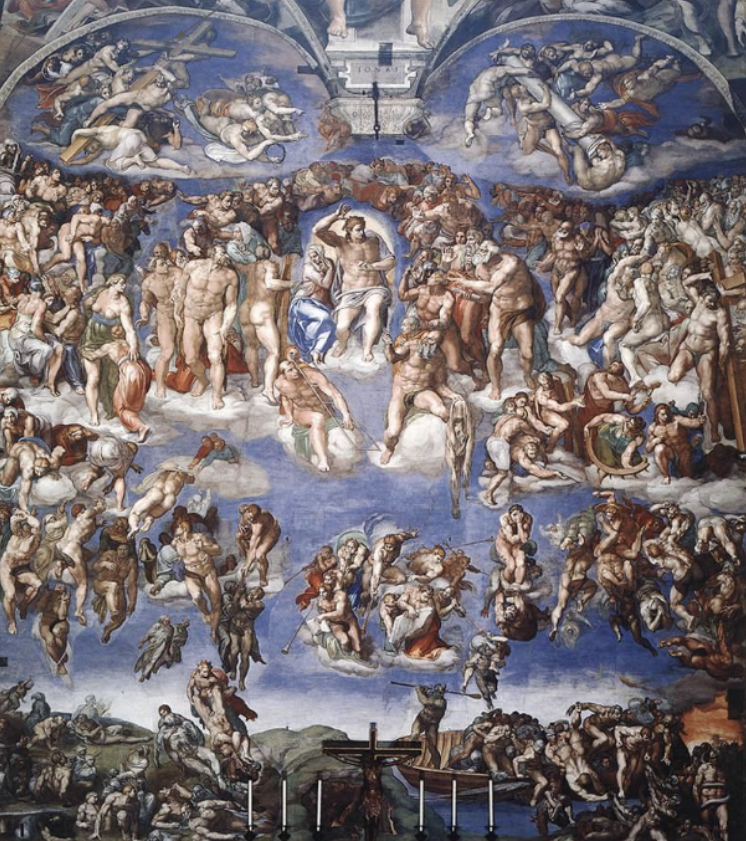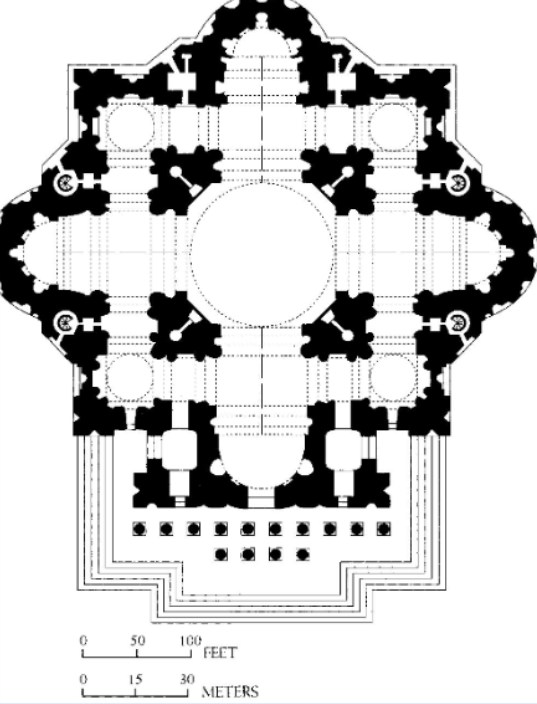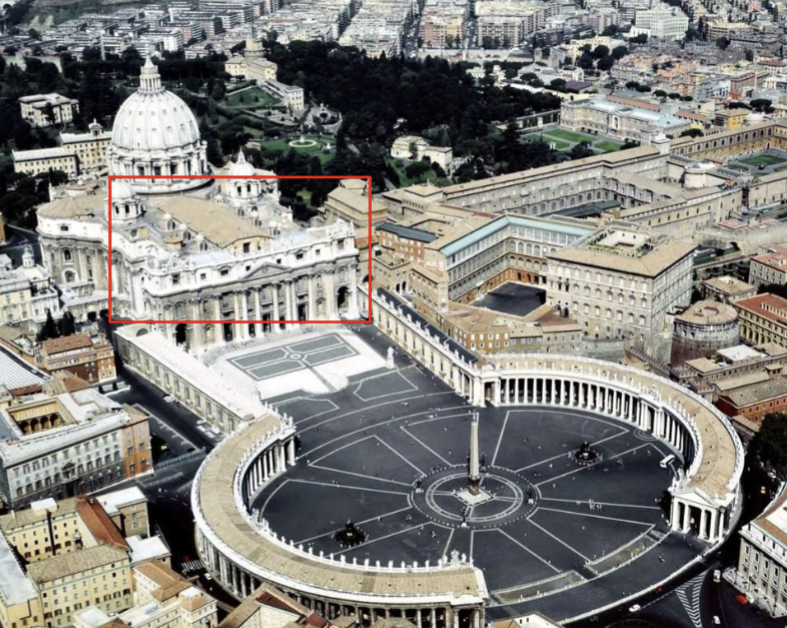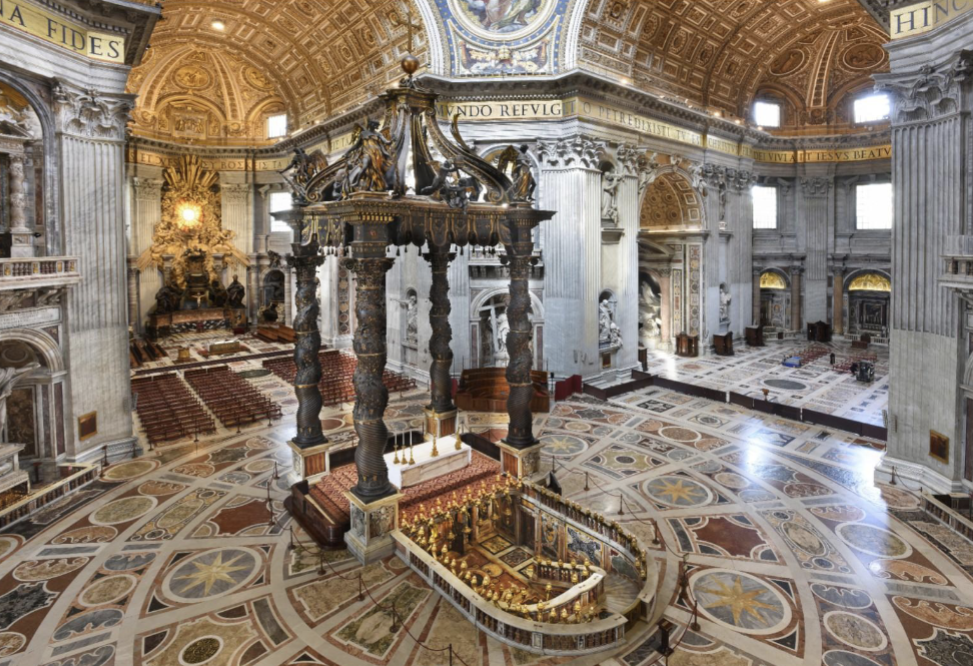ARTH 17th century Italy PART II: The Counter-Reformation Changes at the Vatican
1/10
There's no tags or description
Looks like no tags are added yet.
Name | Mastery | Learn | Test | Matching | Spaced |
|---|
No study sessions yet.
11 Terms
Counter-Reformation art
A specifically Catholic art (mostly practiced in Italy in the second half of the 16th and in the 17th centuries) to convince Catholics who had switched to Protestantism to come back to the Church. Council of Trent: Convened by Pope Paul III in 1545 in response to the Protestant Reformation to review Catholic doctrine; by 1563 the Council upheld many of the existing doctrines & continued to endorse the use of imagery to stimulate religious devotion. Characteristics of baroque art further the main goal of the Counter-Reformation: to bring those who had converted to Protestantism

Michelangelo, Last Judgment, altar wall of the Sistine Chapel, 1536–41. Approx. 45 ft H. Fresco
example of Counter-Reformation art in the Vatican. Although technically this fresco is a 16thC Renaissance work, it was created as part of the Counter-Reformation effort, which why it’s in the slide set on the 17thC. painted alter than the Sistine ceiling and to serve the counter-reformation, serves as a stern reminder of the need to live as a good catholic to prepare for judgement day. Christ, enthroned with the Virgin seated next to him. Figures on the same level as Christ: the elect, ie, those who have made it into heaven, and the saints. Figures on the level below Christ: (L) the saved; (R) the damned. Bottom level: (L) graveyard with souls being pulled out of their graves for judgment
mandorla
almond, full body halo around Christ

Michelangelo, plan for St. Peter’s, 1546. Central plan church
example of Counter-Reformation art in the Vatican, architecture. this configuration is also known as a Greek cross. Dome designed by Michelangelo and completed by Giacomo Della Porta in 1588-90.

Carlo Maderno, St. Peter’s, 1607–15. Added nave (long center aisle) and façade
example of Counter-Reformation art in the Vatican, architecture. Carlo Maderno’s elongation of the center aisle (above) is part of the Counter-Reformation push to dazzle the eyes and stir up religious feeling, thus solidfying people’s Catholic faith. The now-enormous church also stakes its claim as the seat of Catholicism. The new floorplan turns St. Peter’s into a Latin cross-shaped church. free standing and engaged columns on facade (Corinthian/leaf columns) and pilaster/pediment
pilaster/pediment
flat columns with no structural purpose. they are only really for decoration.

Gianlorenzo Bernini, piazza & colonnade (St. Peter’s Square), Vatican, 1656–67
example of Counter-Reformation art in the Vatican, architecture. made the circular Sant Peter’s square and the colonnade. creates a dramatic view. Tuscan colonnade (huge columns) capital = top of a column.
trompe l’oeil
to fool the eye. areas painted to look like marble (figures on the inside of St. Peter’s is an example)

Bernini, Baldacchino (canopy), St. Peter’s, Vatican, 1624–33. Gilt bronze. Approx 100’ H
example of Counter-Reformation art in the Vatican, architecture. View of the Baldacchino, in the crossing of Saint Peter’s Basilica. The well in front of it is open to the tomb of St Peter, below St Peter, the apostle to whom Christ gave the keys of the gates of heaven, is also considered the first pope. uses solomonic columns that are full of olive leaves and bees. the pope was from the barberii. coat of arms on the baldachin. to mark his territory. underside of the canopy. holy spirit and white dove.
solomonic columns
helix shaped columns (baroque)
Bernini, Throne of St. Peter, St. Peter’s Basilica,Vatican, 1624. Gilt bronze, stained glass Approx. 50 feet high
example of Counter-Reformation art in the Vatican, architecture. cathedra peti: latin name of throne of St. Peter. 4 catholic father’s depicted holding throne of St. Peter so it’s hovering in the air. the legend says there is a wood chair belonging to Saint Peter in it. a lot of gilt bronze angles that look like they are pouring into the church.